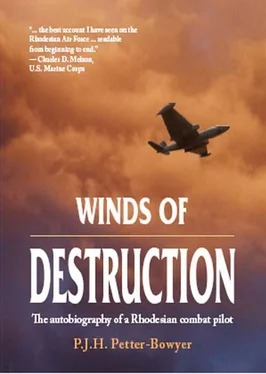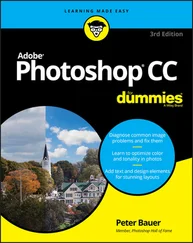Peter Petter-Bowyer - Winds of Destruction
Здесь есть возможность читать онлайн «Peter Petter-Bowyer - Winds of Destruction» весь текст электронной книги совершенно бесплатно (целиком полную версию без сокращений). В некоторых случаях можно слушать аудио, скачать через торрент в формате fb2 и присутствует краткое содержание. Город: Solihull, Pinetown, Год выпуска: 2012, ISBN: 2012, Издательство: Helion & Company, 30° South Publishers, Жанр: Биографии и Мемуары, на английском языке. Описание произведения, (предисловие) а так же отзывы посетителей доступны на портале библиотеки ЛибКат.
- Название:Winds of Destruction
- Автор:
- Издательство:Helion & Company, 30° South Publishers
- Жанр:
- Год:2012
- Город:Solihull, Pinetown
- ISBN:9781908916754
- Рейтинг книги:5 / 5. Голосов: 1
-
Избранное:Добавить в избранное
- Отзывы:
-
Ваша оценка:
- 100
- 1
- 2
- 3
- 4
- 5
Winds of Destruction: краткое содержание, описание и аннотация
Предлагаем к чтению аннотацию, описание, краткое содержание или предисловие (зависит от того, что написал сам автор книги «Winds of Destruction»). Если вы не нашли необходимую информацию о книге — напишите в комментариях, мы постараемся отыскать её.
Winds of Destruction — читать онлайн бесплатно полную книгу (весь текст) целиком
Ниже представлен текст книги, разбитый по страницам. Система сохранения места последней прочитанной страницы, позволяет с удобством читать онлайн бесплатно книгу «Winds of Destruction», без необходимости каждый раз заново искать на чём Вы остановились. Поставьте закладку, и сможете в любой момент перейти на страницу, на которой закончили чтение.
Интервал:
Закладка:
For a while flying became very pleasant because aerobatics and some low flying gave breathing space between the ongoing spinning, forced landings and never-ending circuits and landings. For every two flights with one’s instructor, there was a solo. The stress had subsided and stomachs had become used to the sensations of flight and the stench of fuel. But ahead of us was the next, and by all accounts, most challenging hurdle—instrument flying.
For instrument-flying training, many aircraft employed an arrangement of canvas screens set around a pilot to prevent him from peeping outside the cockpit. Such an arrangement with side-by-side seating was dangerous because it would blank off an instructor’s vision on the port side of the aircraft, thereby limiting his ability to keep a good lookout for other aircraft.
The Provost’s designers overcame the problem with a unique solution. They fitted a robust, amber screen that resided, out of view, between the instrument panel and the engine firewall. For instrument-flight training it was drawn up and locked in place to cover the whole forward windscreen. Swivelled amber panels that came up with the main screen covered the side panels. Finally, sliding panels on the canopy catered for lateral vision. When all screens were in place the instructor continued to have complete freedom of vision though the world appeared to him as if wearing yellow sunglasses.
The student wore a pair of heavy goggles, such as those used by motorbike riders; but a clear vision lens was replaced by one of blue Perspex. Within the cockpit everything looked like the blue moonlight scene of an old movie but the amber screen became ivory black. Only the sun could be seen though this arrangement, which was so effective that direct viewing of the sun was quite safe.
For the first fifteen minutes or so ‘under the hood’ I suffered a high level of claustrophobia. The combination of tight parachute and seat straps, a tight-fitting oxygen mask and large, tight-fitting goggles in a small world of blue, made me battle for breath. However, by the time my instructor had taxied the long distance to the runway, I had acclimatised and was quite settled.
In the learning phases, Instrument Flying (IF) was every bit as difficult as I had expected, particularly in the small blue world devoid of any external references. From the outset I suffered from vertigo which most pilots experience in varying degrees. I was badly affected by this problem; and it never improved throughout my flying days. I simply had to believe that my instruments were right and accept that my senses were wrong. It took a lot of effort and absolute faith in the instruments to master the weakness.
Once I had become reasonably proficient on a full panel of flight instruments and had started to gain confidence, Mick McLaren covered the primary instrument with a plastic stick-on vehicle licence disc holder. Loss of the artificial horizon introduced a new and infinitely more difficult dimension to flight control, but again, practice made this progressively easier. Then a second disc was applied to remove the directional indicator from view, compounding the difficulties because the magnetic compass was awkward to read and was subject to a host of errors, even in straight and level flight.
In the latter part of every flight, my instructor would take over control and put the aircraft through a series of harsh manoeuvres to confuse my understanding of what the aircraft was doing. I tried to use sunlight moving through the cockpit from ever-changing directions, but this confused me more than it helped. Mick McLaren would then say, “You have control” which meant I had to get the aircraft back into straight and level flight in the shortest time possible. Each flight then concluded with a limited panel let-down on the Non-Directional Beacon (NDB) that then flowed into a radar talk-down to landing on a full panel of instruments.
Full panel flying seemed easy compared to limited panel flying, which constituted most of the time spent on IF. A spell of bad weather with eight-eighths cloud (no blue sky) gave opportunity to fly without the amber screen and blue goggles. I could not believe how easy it was to fly instruments under these conditions, but then it was back to the world of blue for many flights to come.
One morning my instructor lined up on the runway for a standard instrument take-off. As I powered up and released the brakes, he began criticising me and kept thrusting his finger at the directional indicator. When I eased the aircraft off the ground, I lost heading a bit—for which he cursed me in a manner I had not known before. For the entire flight I was given hell for everything I did and the names I was called would not pass censorship. My whole world seemed to fall apart as I battled to satisfy my instructor’s non-stop demands, so it was a great relief to get back on the ground.
As Flight Lieutenant McLaren and I were walking back to the crew room he asked, “What went wrong with you today?” I could not answer and dared not look at him because I was too close to tears. He obviously saw the quiver on my chin and said, “Tomorrow will be better. Have a cup of tea, then come and see me in my office for debriefing.”
The next morning I was horrified to see the Flight Authorisation Book had me down for IF with Flight Lieutenant Edwards, our OC I immediately came to the conclusion that this was a scrub check. When the time came, I was called to his office for a pre-flight briefing, but all he said was “Go and pre-flight the aircraft and get yourself strapped in. I will be with you shortly.”
When Ken Edwards climbed into his seat I could not get over the size of the man. His left arm was against mine whereas my instructor’s arm was always clear. He started the engine and commenced taxiing to the runway before telling me to relax. “Take this as just another IF flight”, he said. From then on he only told me what he wanted me to do next. The unusual attitudes I was asked to recover from were so much easier than Mick McLaren’s. The routine NDB and radar letdown were fine and we were back on the ground in less than the usual hour. As we taxied back to dispersals Ken Edwards said, “Well done, you have passed your instrument-rating test." I was over the moon.
I had had absolutely no idea that this had been a rating test or that my instructor had deliberately set me up for it. By baiting me continuously the previous day, Flight Lieutenant McLaren had satisfied himself that I would not fall to pieces under duress, so he was quite sure I would fly a good test.
It was great to be the first of my course to gain a White Card instrument rating. Some of my fellow students struggled with instrument flying and our number had reduced to ten students by the time the last IF test was flown. For the two weeks between my test and the last student passing his, I was flying two solo sorties for every one flown with my instructor. Flying was now becoming really enjoyable!

One of the students who failed to make it through the IF phase was Ronnie Thompson. He was very depressed and embarrassed by his failure. However, upon his return to civilian life, he followed his passion for wildlife and became a game warden with Rhodesian National Parks. In a career that continues today, Ronnie proved himself to be a top-line ranger and an enthusiastic promoter of wildlife. Over the years he has featured in many wide-ranging wildlife topics on radio, TV and press.
Having achieved instrument flight proficiency, it was time to move on to night flying, which was great. The fairyland of coloured lights covering Gwelo town and Thornhill reminded me of the 1947 visit to Rhodesia by King George VI, Queen Elizabeth and the two princesses. For that royal visit Salisbury had been transformed into a dream world of coloured lights, with thousands of flags and portraits of the Royal Family. The colours, sights and sensations of the occasion are indelibly printed in my mind and night flying always induces recall of that special occasion.
Читать дальшеИнтервал:
Закладка:
Похожие книги на «Winds of Destruction»
Представляем Вашему вниманию похожие книги на «Winds of Destruction» списком для выбора. Мы отобрали схожую по названию и смыслу литературу в надежде предоставить читателям больше вариантов отыскать новые, интересные, ещё непрочитанные произведения.
Обсуждение, отзывы о книге «Winds of Destruction» и просто собственные мнения читателей. Оставьте ваши комментарии, напишите, что Вы думаете о произведении, его смысле или главных героях. Укажите что конкретно понравилось, а что нет, и почему Вы так считаете.












